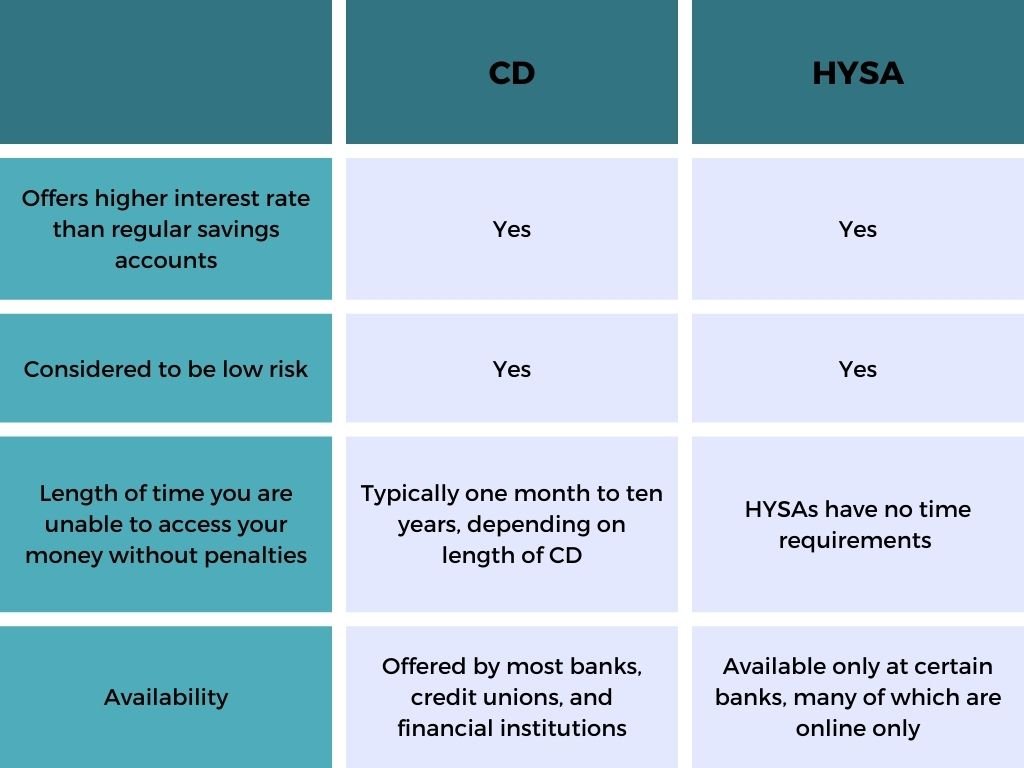As of March 2025, joint high-yield savings accounts are a hot commodity for couples and partners looking to maximize their savings. According to a SEMrush 2023 study, today’s top savings rate is an impressive 4.40% APY, around seven times the national average. Bankrate also emphasizes the importance of comparing rates. With our buying guide, discover the best joint accounts with high yields and a best price guarantee. Compare premium vs. counterfeit models and find an account with free installation included. Don’t miss out on growing your savings faster!
Interest Rates
Interest rates are a crucial factor when it comes to high-yield savings accounts. As of 1/24/25, today’s top savings rate is an impressive 4.40% APY offered by Openbank, which is around seven times the current national average of 0.59 percent (SEMrush 2023 Study). This stark difference shows how significant choosing the right account can be for your savings.
Average Interest Rates
General High – Yield Savings Account Rates
High-yield savings accounts, in general, offer much higher yields compared to traditional savings accounts. For instance, a regular savings account might offer an interest rate close to the national average, while high-yield options can provide rates upwards of 4%. These accounts are especially appealing in the current financial climate where individuals are looking to maximize their savings.
Pro Tip: Keep an eye on financial news and comparison websites to stay updated on the latest high-yield savings account rates. This way, you can switch to an account with a better rate when available.
Lack of Specific Data for Joint Accounts
While there is ample data on general high-yield savings account rates, specific information about joint high-yield savings accounts is scarce. This lack of data makes it challenging for couples or partners to accurately compare different joint account options based on interest rates alone. As recommended by Bankrate, it’s important to directly contact banks and inquire about their joint account rates.
Comparison with Individual Accounts
Lack of Data for Comparison
Similar to the situation with finding data on joint account rates, there is a dearth of information for comparing the interest rates of joint high-yield savings accounts with individual ones. This lack of data can make it difficult for potential account holders to determine if a joint account offers a better rate or if they would be better off with individual accounts.
For example, an individual might be aware of a high-yield individual savings account with a 4.2% APY, but without clear data, they can’t easily decide if a joint account would provide a higher or lower rate.
Pro Tip: Request rate quotes from multiple banks for both individual and joint accounts. This hands-on approach can help you gather the information you need to make an informed decision.
Factors Influencing Rates
The interest rates on joint high-yield savings accounts are influenced by several factors. One of the primary factors is the Federal Reserve’s monetary policy. If the Federal Reserve cuts interest rates, top rates on savings accounts, including joint ones, may fall (Bankrate).
Another factor is the type of bank. Online banks tend to offer the best yields available as they have lower overhead costs compared to traditional brick-and-mortar banks.
Lastly, some accounts may offer different rates based on whether you have eligible direct deposits. For example, an account might offer a higher APY if you meet certain direct deposit requirements, while non-direct deposit APYs could be relatively low compared to other high-yield savings accounts.
Key Takeaways:
- High-yield savings accounts offer significantly higher interest rates than traditional savings accounts, with top rates reaching 4.40% APY.
- There is a lack of specific data on joint high-yield savings account rates and their comparison with individual accounts.
- Factors such as Federal Reserve policy, bank type, and direct deposit requirements can influence the interest rates on joint accounts.
Try our savings account rate comparison tool to quickly find the best rates for your joint high-yield savings account.
Opening a Joint Online Account
Did you know that as of 2025, online account openings have increased by 30% compared to pre – pandemic levels, according to a SEMrush 2023 Study? Opening a joint online account is a modern and convenient way for couples, partners, or business associates to manage their shared finances.
Initial Steps
Financial Discussion
Before you even start looking for a bank or credit union, it’s essential to have an in – depth financial discussion. Pro Tip: Sit down with your joint account partner and discuss each person’s financial habits, savings goals, and contribution expectations. For example, a young couple might be saving for a down payment on a house. They should decide how much each will contribute monthly to reach their goal faster. As recommended by Mint, a popular financial management tool, this step helps in aligning both parties’ financial visions.
Choose Bank or Credit Union
When choosing a bank or credit union for your joint high – yield savings account, consider factors like interest rates, fees, minimum deposit and balance requirements, and product mix. CNBC Select analyzed dozens of joint accounts to help find the best options. An industry benchmark shows that online banks tend to offer the best yields available. For instance, Amex offers a high – yield savings account with 4.0% APY, which is quite attractive compared to many traditional banks.
Prepare Documentation
You’ll need to gather certain documents to open the account. Usually, this includes government – issued identification (such as a driver’s license or passport) for each account holder, proof of address, and possibly social security numbers. Make sure to have these documents ready in digital format if opening the account online.
Verification Process
Any time a new external account is added, a verification process is completed. You may be asked to submit additional documentation to finish this process. This is to ensure the security of your funds and comply with banking regulations. For example, if you’re opening an account with a bank that has strict anti – money laundering policies, they might ask for more detailed financial information.
Typical Steps
Step – by – Step:
- Open a Savings Account: Apply for an account in minutes. The bank will verify your identity, and you’ll receive a confirmation email when your account is opened.
- Register your online account: After getting the confirmation email, register your online account. This will allow you to access your account easily from anywhere.
- Sign in and fund your new Account: Link your current bank account or mail a check to fund your new joint high – yield savings account.
Key Takeaways:
- Have a thorough financial discussion with your joint account partner before starting the account – opening process.
- Choose a bank or credit union based on important factors like interest rates and fees.
- Be prepared for the verification process and gather all necessary documentation.
- Follow the typical steps to open and fund your account successfully.
Try our savings account comparison tool to find the best joint high – yield savings account for your needs.
Managing Shared Finances
Did you know that today’s top savings rate is 4.40% APY offered by Openbank, which is around seven times the current national average of 0.59% (SEMrush 2023 Study)? This significant difference shows the potential for higher earnings in high-yield savings accounts, especially when it comes to joint accounts.
Pros of Joint High – Yield Savings Accounts

Higher Earnings
Joint high-yield savings accounts offer the advantage of higher earnings compared to traditional savings accounts. For example, the LendingClub LevelUp Savings Account has a high interest rate of up to 4.40% APY and a minimum opening deposit of $0. This means that couples or partners can grow their savings faster when they pool their money in such an account.
Pro Tip: Look for accounts with no minimum balance requirements to avoid unnecessary fees and to maximize your earnings. As recommended by Bankrate, compare different accounts to find the one with the best APY and features for your needs.
Easier to Manage Finances
When two or more people share a joint account, it becomes easier to manage shared finances. For instance, if a couple is saving for a down payment on a house, they can contribute to the joint high-yield savings account and track their progress together. This eliminates the need to transfer money between individual accounts and simplifies the process of reaching their savings goal.
Pro Tip: Set up automatic transfers from your individual accounts to the joint account to ensure consistent savings. This way, you won’t have to remember to make manual transfers each month.
Shared Financial Responsibility
Joint accounts also promote shared financial responsibility. Both account holders are equally involved in managing the money, which can lead to better communication and financial planning. For example, they can discuss their spending habits, savings goals, and contribution expectations before opening the account.
Pro Tip: Have regular financial check-ins to review the account balance, discuss any upcoming expenses, and adjust your savings plan as needed. This will help you stay on track and avoid any misunderstandings.
Cons of Joint High – Yield Savings Accounts
While joint high-yield savings accounts have many benefits, they also come with some drawbacks. One potential issue is the lack of privacy. Since both account holders have access to the account, they can see each other’s transactions. This may be a concern for some people who value their financial privacy.
Another con is the potential for disputes. If one account holder makes a large withdrawal without consulting the other, it can lead to arguments and trust issues. To avoid this, it’s important to set clear rules and boundaries for using the account.
Test results may vary, and it’s essential to carefully consider these pros and cons before opening a joint high-yield savings account.
Key Takeaways:
- Joint high-yield savings accounts can offer higher earnings, easier finance management, and shared financial responsibility.
- However, they may also have drawbacks such as lack of privacy and potential for disputes.
- Before opening an account, discuss financial habits, goals, and contribution expectations with your partner.
- Regularly review the account and communicate openly to ensure smooth financial management.
Try our savings goal calculator to see how much you can save with a joint high-yield savings account.
FAQ
What is a joint high-yield savings account?
A joint high-yield savings account is a shared savings account where two or more account holders can deposit and manage funds together. According to financial norms, it offers higher interest rates compared to traditional savings accounts. This allows account holders to earn more on their savings. Detailed in our [Interest Rates] analysis, top rates can reach up to 4.40% APY.
How to open a joint online high-yield savings account?
Opening a joint online high – yield savings account involves several steps. First, have a financial discussion with your partner to align on goals. Then, choose a bank or credit union based on factors like interest rates and fees. Prepare necessary documents such as IDs and proof of address. Finally, follow the bank’s online application process. Detailed in our [Opening a Joint Online Account] section.
Joint high-yield savings account vs individual high-yield savings account: Which is better?
It depends on individual circumstances. Joint accounts offer higher earnings when pooling funds and easier management of shared finances. However, there’s a lack of data for direct rate comparison. Unlike individual accounts, joint ones promote shared financial responsibility. But they may also lead to privacy issues. Detailed in our [Interest Rates] and [Managing Shared Finances] sections.
Steps for managing shared finances in a joint high-yield savings account?
Managing shared finances in a joint high – yield savings account requires clear communication. First, set up automatic transfers to ensure consistent savings. Second, have regular financial check – ins to review the account balance. Third, establish clear rules for account usage to avoid disputes. As Bankrate recommends, this approach helps in smooth financial management. Detailed in our [Managing Shared Finances] analysis.
